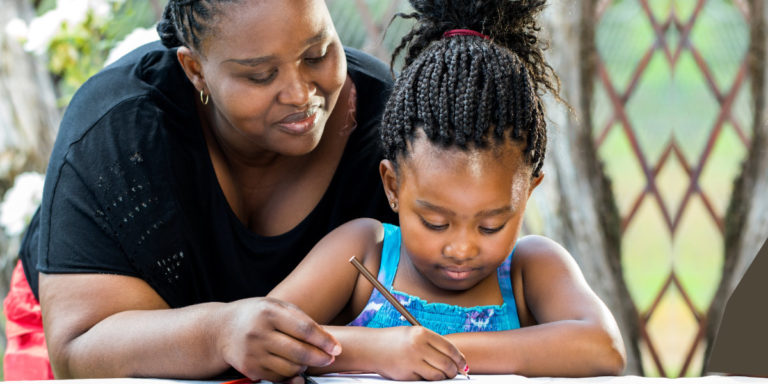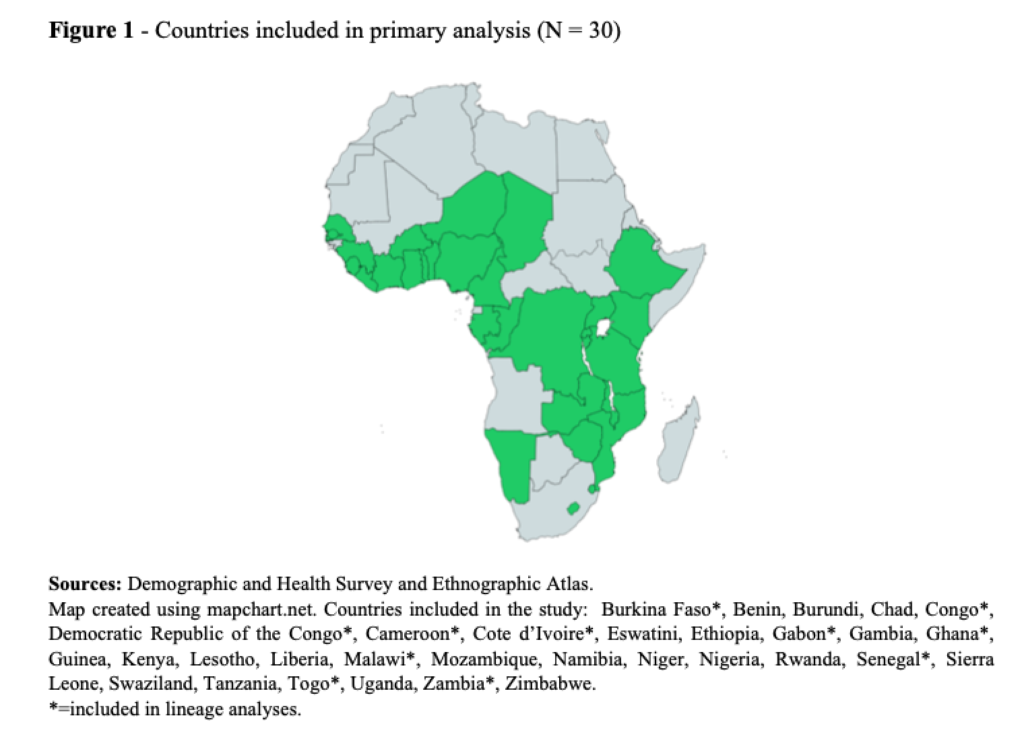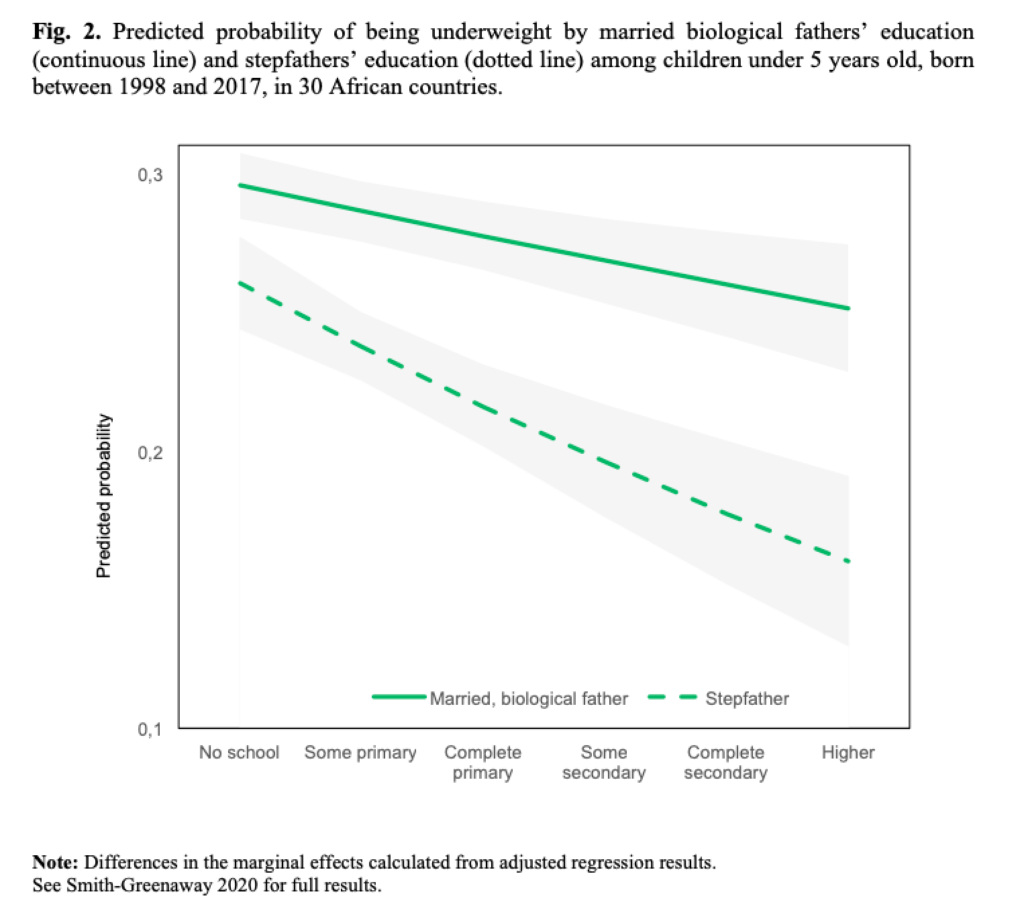The child health benefits of parents’ education in diverse African families

Does union status affect the intergenerational transmission of advantage? Using data from 30 African countries, Emily Smith-Greenaway examines whether the health advantages associated with parents’ education are comparable for children
with cohabiting or divorced parents, including those with a co-resident stepfather, relative to children with married parents.
Child health inequalities are strongly patterned by parents’ socioeconomic status, including their level of education (Elo 2009). Children born to highly educated, well-resourced parents are primed to experience healthy development, whereas children born to less educated and socially disadvantaged parents are vulnerable to poor health and developmental delays (Prickett and Augustine 2016).
In sub-Saharan Africa, children are increasingly born to more highly educated mothers and fathers. Yet, African children reside in diverse family structures, and do not always live with their biological parents. Many children spend their earliest years with a single mother and subsequently a stepfather (Clark and Hamplova 2013). These family structures are recognized to correspond with childhood disadvantage (Clark and Hamplová 2013); however, they could also disadvantage children by interfering with the intergenerational benefits of their parents’ education. In a recently published paper (Smith-Greenaway 2020), I assessed whether union status conditions the childhood health advantages tied to parents’ education using Demographic and Health Survey (DHS) data from 30 African countries.
Does union status alter the child health benefits of parents’ education?
Understanding whether parents’ union status can alter the intergenerational benefits of parents’ education in the sub-Saharan African context is important given the diversity of family structures in the region. Even with comparable education, being a single mother imposes additional parenting challenges (e.g., less caretaking support, higher cost of living) —challenges that could offset the positive impact of their education on their children’s health. Children with single mothers may also have little contact with their nonresident fathers, and this could possibly disrupt father-to-child transmission of advantage. Nonresident fathers are often less involved in their children’s lives and in day-to-day decisions. Remarriage could also shift the influence of parents’ education on children. Emerging research has shown that it is common for children in several African countries to live with stepfathers (Adjiwanou 2017), raising questions of whether stepfathers’ education produces the same degree of child health advantage as biological fathers’ education (Lopus 2017; Madhavan et al. 2016).
To explore these possibilities, I conducted a multi-country analysis of whether parents’ union status modifies the association between mothers’ and fathers’—and when relevant, stepfathers’—education and children’s health in sub-Saharan Africa. Specifically, I examined whether parents’ union status corresponds with distinct associations between parents’/stepparents’ education and children’s likelihood of being stunted and underweight—two indicators of children’s physical health. Because the local lineage system corresponds with distinct norms surrounding family and parent-child relationships (Oheneba-Sakyi and Takyi 1997), in a subset of countries featuring diverse lineage systems, I also studied whether the findings differ systematically across settings where patrilineal versus matrilineal ethnic groups are concentrated.
Parents’ education, union status, and child health
I used DHS data from the countries highlighted in Figure 1. Together, the data included information on 271,292 children under age 5 residing with their mother in 311 regions in 30 sub-Saharan African countries. In 11 countries where data were available, I classified the predominant family lineage pattern in each subnational region to study whether findings were stable across matrilineal and patrilineal settings.

Like past studies, my results confirmed clear evidence of the intergenerational transmission of advantage: mothers’ and fathers’ education are independently associated with their children’s lower risk of being stunted or underweight. The study findings also aligned with past studies on child health inequalities across parents’ union status: after accounting for numerous economic, social, and contextual factors, children with cohabiting and divorced versus married biological parents were more likely, on average, to be stunted and underweight, but those living with their mother and stepfather were not.
Indeed, stepfathers’ education strengthened the protective effect for children’s health, especially in the case of stunting. As shown in Figure 2, children residing with biological fathers, as well as those residing with stepfathers, both experienced lower odds of stunting with each level of their fathers’/stepfathers’ education. However, the advantage was more pronounced among children living with a stepfather. Additional analyses of a subsample of families in 11 countries showed that the heightened child health benefit associated with a more highly educated stepfather was driven by patrilineal settings. For children living in patrilineal settings, a stepfather’s education had a notably stronger influence on lowering their likelihood of stunting than that of a married biological father.

The “take home message”
Education is a key source of intergenerational advantage. Even across diverse family structures, education determines which parents have the means to ensure their young children’s basic physical growth and which do not. Being unmarried or divorced does not disrupt the intergenerational transmission of advantage, either from mother to child or from father to child. This is true in subnational regions of Africa where patrilineal practices are predominant as well as in regions where matrilineal groups are concentrated. Indeed, in patrilineal regions, children with highly educated stepfathers experienced slightly better health than children living with their equally educated, married biological fathers. This finding offers clear evidence that stepfathers’ resources can also advantage their stepchildren. Together, the study results confirm that the intergenerational transmission of advantage does not hinge on the formation, or continuation, of the parents’ union.
References
Adjiwanou, V. (2017, April). Stepfamily in sub-Saharan Africa: Trend and consequences on child and adolescent well-being. Paper presented at the annual meeting of the Population Association of America, Chicago, IL.
Clark, S., & Hamplová, D. (2013). Single motherhood and child mortality in sub-Saharan Africa: A life course perspective. Demography, 50, 1521–1549.
Elo, I. T. (2009). Social class differentials in health and mortality: Patterns and explanations in comparative perspective. Annual Review of Sociology, 35, 553–572.
Lopus, S. (2017). Relatives in residence: Relatedness of household members drives schooling differentials in Mozambique. Journal of Marriage and Family, 79, 897–914.
Madhavan, S., Richter, L., & Norris, S. (2016). Father contact following union dissolution for low-income children in urban South Africa. Journal of Family Issues, 37, 622–644.
Oheneba-Sakyi, Y., & Takyi, B. K. (1997). Effects of couples’characteristics on contraceptive use in subSaharan Africa: The Ghanaian example. Journal of Biosocial Science, 29, 33–49.
Prickett, K.C., & Augustine, J.M. (2016). Maternal education and investments in children’s health. Journal of Marriage and Family, 78, 7–25.
Smith-Greenaway, E. (2020) Does Parents’ Union Instability Disrupt Intergenerational Advantage? An Analysis of Sub-Saharan Africa. Demography 57, 445–473.